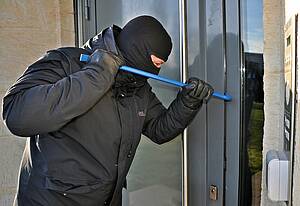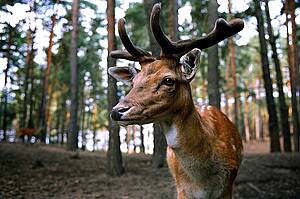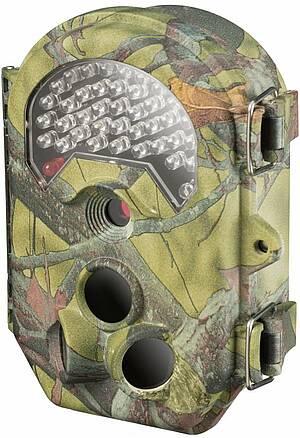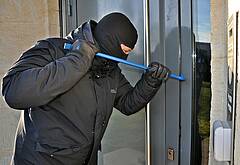

They were actually designed to catch fox and hare in the act: wildlife cameras. Tailored to the use of hunters, the cameras with their motion sensor and self-timer, infrared sensor and SD function also have a wealth of features that more and more private individuals are discovering.
For example, wildlife cameras are often used to observe animals in your own garden, because it is simply exciting for many people to find out which animals are out there at night: Whether it's deer in the flowerbed, herons stealing fish or raccoons attacking the dustbin.
Thanks to their ability to photograph inconspicuously, wildlife cameras are also ideal for monitoring the property. Especially now, in autumn and winter, when it gets dark early, burglars are in high season.
Motion sensor, infrared sensor and camouflage look: The many advantages of a wildlife camera
The big advantage of a wildlife camera is the motion sensor, which activates the camera exactly when an animal - or even a human - walks in front of the lens. Because wildlife cameras do not record around the clock and do not produce videos, but rather photos or series of images, they require much less memory and have longer operating times and lower battery consumption than conventional surveillance cameras.
Let's get back to the main strength: the motion sensor of a wildlife camera is so sharply focused that it triggers the camera even in impossible lighting conditions. Normally, the sensitive sensor of a wildlife camera is supposed to observe animals in the forest - also, or rather: just in the twilight and at night, when most forest inhabitants become active in the first place.
Our BRESSER surveillance camera with 120 degree PIR motion sensor and invisible infrared flash, for example, comes in a well camouflaged camouflage look and takes pictures of up to 16 megapixels - colour by day and monochrome at night. The camera even makes Full HD 1080P videos, either 10 seconds or 5 minutes long. The low power consumption ensures long use without having to constantly change the batteries: Up to 6 months of operation in stand-by mode are no problem.
Where may you use and attach a wildlife camera?
In general it is allowed to monitor your own property. However, there are a few rules that you must follow, as the privacy and personal rights of third parties must not be violated.
All camera shots that go beyond the property boundary are therefore prohibited. Neither the pavement or the street in front of the garden fence nor the garage entrance shared with the neighbour (for example in the case of semi-detached houses) may be recorded. In the case of jointly used parts of the property or building, ask your neighbour: he must agree to the surveillance.
Construction and useDue to the above-mentioned characteristics, wildlife cameras are perfectly suited for guarding weak points in the house, such as patio doors, entrance areas, cellar doors and windows. In addition, the housing of a wildlife camera is usually camouflaged and the cameras are small anyway, so that they do not attract attention.They are rather unsuitable for monitoring the entire property, which they trigger even when the neighbour's cat sneaks past.Basically, please consider the following: Wildlife cameras provide photographic evidence of unauthorised intrusion into your house by third parties, they do not trigger an alarm. But surveillance cameras normally do not do that either. The main benefit is that the pictures taken by burglars serve the success of the search - and thus the conviction of the perpetrators. However - and this must be clear to you: The police are only interested in photos taken inside the house or showing how someone enters the house, but not in what happens outside.BRESSER surveillance camera with 120 degree PIR motion sensor

 Deutsch
Deutsch
 English
English
 Francais
Francais
 Español
Español
 Italiano
Italiano
 Nederlands
Nederlands
 Polski
Polski

